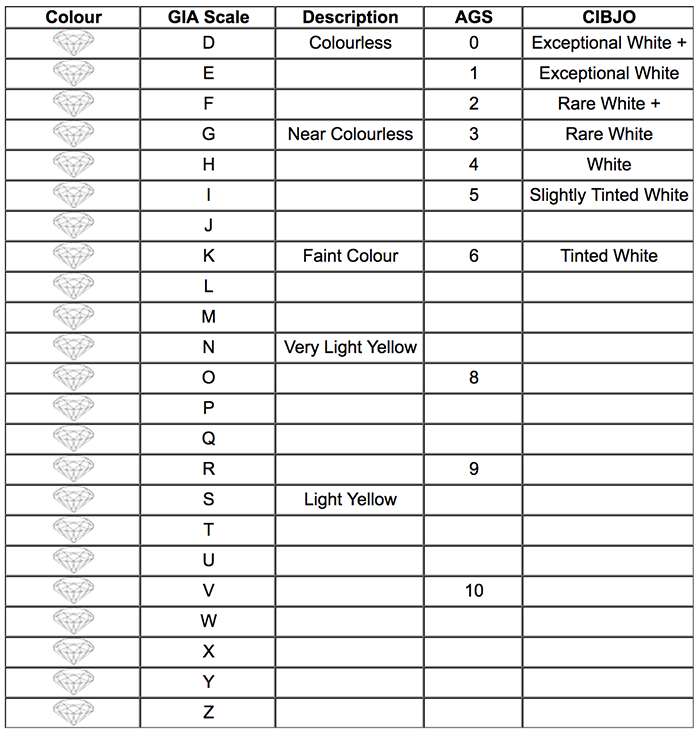The Four Diamonds Characteristics
- How a Diamond handles light -
The cut enables a diamond to make the best use of light. When a diamond is cut to good proportions, light is reflected from one facet to another and dispersed through the top of the stone. If the cut of the diamond is too deep, some light escapes through the opposite side of the pavilion. If the cut is too shallow, light escapes through the pavilion before it can be reflected.
- CUT -
The cut of a diamond is not its shape, which may be round, rectangular, marquise, drop or even heart shape. When we talk about cut, we mean how close the master cutter has come to ideal proportions.
- COLOUR -
The best colour is no colour at all. The grading for a stone without any colour, is grade D on the GIA scale, or "Exceptional White+" on the CIBJO scale. Such a stone is extremely rare. It will be very difficult for the unskilled eye to detect any colour difference in the top five grades, and if the stone is viewed through the table (i.e through the top of the stone) in a mounted ring, it will be impossible even for experts to differentiate between these grades without a master set for comparison.
The closer a diamond is to being absolutely colourless, the more valuable it will be.
- CLARITY -
A diamond, more than any other gemstone, has the capability to produce the maximum amount of brilliance. The highest quality of diamond is virtually free of interior inclusions and external features of crystallisation, is one of the highest quality, for nothing else interferes with the passage of light through the diamond. To determine a diamond's clarity, it is viewed under 10 x magnification by a trained eye. Minute inclusions neither mar its beauty nor endanger its durability, but of course the fewer they have, the rarer the stone.
Only a very small percentage of diamonds sold are in the grades of VS1 and above. The vast majority are within grades SI1-P3.

- CARATS -
Diamonds and other gemstones are weighed in metric carats: (don’t confuse carat with karat, as in “18K gold,” which refers to gold purity.)
One carat is equivalent to 0.2 grams. Within the trade, one carat is divided into one hundred units called points; a stone weighing 0.64 carats would be referred to as a '64 pointer'. It is vitally important to take into account all four C's when choosing your diamond. Larger doesn't necessarily mean better. A large stone will not be very valuable if it is cut badly or is of a low grade colour.


